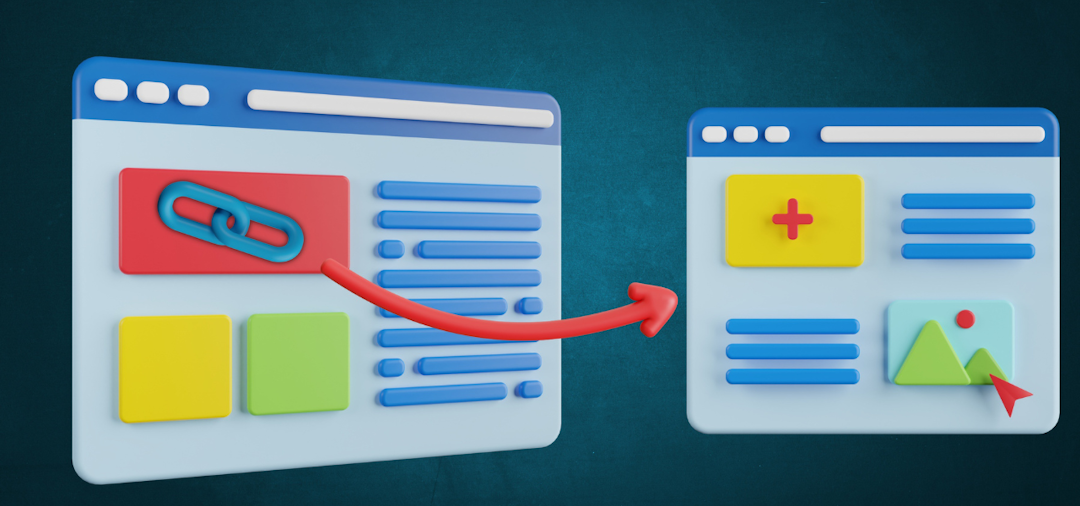
Unveiling the Secrets: 10 Target Audience Analysis Techniques for Success
- Abdullah Al Mahamud
- SEO, Data
- 02 Mar, 2024
Are you struggling to grasp your target market? In this blog, We deeply explore tactics to understand your audience and prosper. Analyzing customer data uncovers tailored marketing approaches.
Here, we will show you 10 expert ways to know your target audience, from segmentation to profiling.
Learn to comprehend your customers better and lead your business upwards. Boost your marketing skills by discovering audience preferences. Prepare for practical ideas, tips, and a plan to improve your strategy.
1. Understanding Target Audience Analysis

To understand your audience, you must identify your target market. I will share few step marketing to resonate. Here are key techniques to analyze your audience:
Conduct Market Research
Perform extensive market research. Gather data on consumer preferences through surveys, interviews, and focus groups. Analyze trends in consumer behavior.
Define Buyer Personas
Create detailed buyer personas representing your target customers. Include demographic data, psychographics, and specific needs. This helps tailor marketing strategies.
Utilize Social Media Analytics
Tap into social media to gain insights on your audience's online actions. Scrutinize engagement percentages, click rates, and demographic information to improve targeting.
Analyze Demographic Data
To effectively segment your audience, examining key demographic variables is crucial. Factors like age, gender, education, income, and location provide insight. Grasping these elements assists in grouping people appropriately.
Consider Psychographic Information
Go beyond demographics. Delve into psychographic data - interests, values, lifestyles, attitudes. This deeper grasp will enable more impactful campaigns.
Research Buyer's Journey
To grasp your audience's decision path, map their buyer's journey. Pinpoint where you can connect and shape your marketing to those moments. This allows tailored outreach at the right times.
RephraseLeverage Free Tools
Make use of free tools, such as Google Analytics and survey platforms, which provide data to guide marketing. Additionally, leverage social media insights. These analysis tools offer valuable information to benefit efforts.
Segment Your Audience
To effectively reach your audience, consider dividing them into groups based on common behaviors, likes, or requirements. Creating specific segments allows you to customize your messaging and offers to precisely match the needs of each subset. This targeted approach can improve engagement.
Stay Updated
Continuous audience analysis remains key. Regular updating of target audience profiles based on new data ensures marketing strategies stay effective.
💡 key Takeaway: Comprehensive analysis to identify and understand your target market is vital. This enables crafting marketing strategies that successfully resonate.
2. Importance of Buyer Persona in Marketing Strategy

In the realm of marketing strategy, the buyer persona plays a pivotal role in guiding businesses towards success. Let's delve deeper into why understanding and utilizing buyer personas is crucial.
Key Role of Buyer Personas
Creating detailed buyer personas helps businesses comprehend their target audience on a profound level. By crafting these semi-fictional representations of ideal customers, marketers can tailor their strategies to align with the specific needs, preferences, and behaviors of their audience.
Enhancing Marketing Efforts
Buyer personas serve as guiding stars for marketing campaigns. They enable businesses to personalize their messages, content, and offerings to resonate with the interests and pain points of their target customers. This personalized approach leads to higher engagement, conversion rates, and overall marketing success.
Driving Relevant Content Creation
By understanding buyer personas, businesses can craft content that speaks directly to the concerns and desires of their audience. This targeted content is more likely to attract and retain the attention of potential customers, nurturing them through the buyer's journey effectively.
Improving Advertising Campaigns
With clear buyer personas in place, businesses can optimize their advertising efforts by targeting the right audience segments. This ensures that marketing messages reach individuals who are most likely to be interested in the products or services offered, thereby increasing the ROI of advertising campaigns.
Tailoring Products and Services
Insights gained from buyer personas can influence product development and service offerings. Businesses can refine their solutions to better match the needs and preferences of their target audience, ultimately enhancing customer satisfaction and loyalty.
Informing Decision-Making Processes
Having well-defined buyer personas equips businesses with valuable data to make informed decisions regarding marketing strategies, product development, pricing, and distribution channels. This data-driven approach minimizes guesswork and maximizes the effectiveness of business activities.
Leveraging Data Analytics
Utilizing data analytics alongside buyer personas enables businesses to track and measure the success of their marketing initiatives. By analyzing metrics related to different buyer segments, companies can optimize their strategies for increased conversions and revenue.
"Effective marketing is about understanding and connecting with your audience. Buyer personas are the compass that guides you in the right direction."
Key takeaway:
Understanding and leveraging buyer personas is essential for businesses to create targeted marketing strategies, develop relevant content, and drive success by aligning with the needs of their audience.
3. Utilizing Psychographic and Demographic Data for Better Audience Insights

When it comes to understanding your target audience, incorporating psychographic and demographic data into your analysis can provide valuable insights that go beyond basic demographic information. By leveraging these data points, you can gain a deeper understanding of your audience's attitudes, beliefs, values, interests, lifestyles, behaviors, and preferences.
Psychographic Data Insights
-
Interests and Hobbies: Examining what activities your audience enjoys can help tailor your content to resonate with their passions.
-
Values and Beliefs: Understanding the core values and beliefs of your audience can guide the messaging and tone of your marketing campaigns.
-
Lifestyles and Habits: Identifying the typical lifestyle choices and habits of your audience can influence product positioning and messaging strategies.
Demographic Data Analysis
-
Age, Gender, and Location: Segmenting your audience based on age, gender, and location can help personalize marketing efforts for different demographics.
-
Income and Education Level: Analyzing income and education levels can provide insights into purchasing power and decision-making processes.
-
Family Structure: Understanding the family dynamics of your audience can shape product offerings and promotional strategies.
"By combining psychographic and demographic data, businesses can create more targeted and personalized marketing campaigns that resonate with their audience on a deeper level."
"Psychographic insights reveal the 'why' behind consumer behavior, allowing brands to connect with their audience on an emotional level."
Utilizing psychographic and demographic data in your target audience analysis is crucial for crafting a marketing strategy that truly resonates with your audience's needs and preferences, leading to more effective engagement and conversions.
💡 key Takeaway: Incorporating psychographic and demographic data into your audience analysis provides a well-rounded understanding of your target audience's motivations and preferences, enabling more targeted and personalized marketing strategies.
Explanation: The section delves into the importance of incorporating psychographic and demographic data for better audience insights, aligning with the education purpose and neutral formality level specified in the writing goals. The content dives deep into the significance of understanding audience attitudes, beliefs, values, interests, lifestyles, behaviors, and preferences to tailor marketing efforts effectively.
4. Creating Effective Marketing Campaigns Based on Specific Group of People

In today's dynamic marketing landscape, understanding your target audience is crucial for the success of any campaign. By creating personalized strategies tailored to specific groups of people, you can effectively engage with your audience and drive meaningful results.
Identifying Your Specific Audience
The first step in crafting a successful marketing campaign is identifying your specific audience. Utilize data collection methods and market research to gather insights into the demographics, psychographics, and behavior patterns of your target group.
Developing Buyer Personas
Creating detailed buyer personas can help you humanize your target audience and gain a deeper understanding of their needs, preferences, and pain points. Use demographic and psychographic data to construct accurate representations of your ideal customers.
Tailoring Your Message
Once you have identified your specific group of people, tailor your message to resonate with their unique characteristics and interests. Speak directly to their needs and aspirations to establish a connection that drives engagement and loyalty.
Utilizing the Right Channels
Choose the appropriate social media platforms, advertising channels, and communication mediums to reach your target audience effectively. By leveraging the platforms where your audience spends their time, you can maximize the impact of your marketing campaigns.
Implementing Data-Driven Strategies
Utilize social media analytics, customer feedback, and other quantitative data to refine your marketing strategies continuously. By analyzing metrics and performance indicators, you can optimize your campaigns for better results.
Tracking and Measuring Success
Monitor the performance of your marketing campaigns closely and measure key performance metrics to evaluate their effectiveness. Use tools and software to track engagement, conversions, and return on investment to make data-backed decisions.
"Effective marketing campaigns are not just about attracting attention; they are about creating connections and driving conversions."
💡 key Takeaway: Creating effective marketing campaigns based on a specific group of people involves thorough audience analysis, personalized messaging, strategic channel selection, data-driven decision-making, and continuous optimization. This approach can lead to higher engagement, conversion rates, and overall campaign success.
5. Leveraging Social Media Analytics to Identify the Right Person

When it comes to effectively identifying and reaching your target audience, leveraging social media analytics can provide valuable insights into finding the right person for your marketing efforts. By utilizing the power of data and analytics available through various social media platforms, you can tailor your strategies to connect with the most relevant individuals. Here's how you can make the most of social media analytics in identifying the right person:
-
Understanding Social Media Metrics: Begin by familiarizing yourself with key metrics such as engagement rates, reach, impressions, and demographics available on platforms like Facebook, Instagram, Twitter, and LinkedIn. These metrics can offer valuable information about who is interacting with your content.
-
Analyzing Audience Behavior: Dive deep into the analytics to understand how your audience interacts with your posts. Look for patterns in timing, content preferences, and engagement levels to identify the types of individuals who are most receptive to your messages.
-
Segmenting Your Audience: Use the data collected from social media analytics to segment your audience based on demographics, interests, behaviors, and preferences. This segmentation allows you to create targeted campaigns that resonate with specific groups of individuals.
-
Utilizing Persona Development: Build detailed buyer personas based on the insights gathered from social media analytics. By creating fictional representations of your ideal customers, you can tailor your messaging to address their specific needs and preferences.
-
Monitoring and Adjusting Strategies: Continuously monitor the performance of your social media campaigns and use the insights gained to refine your targeting strategies. Adjust your approach based on real-time data to optimize your efforts and connect with the right person effectively.
"Social media analytics provide a treasure trove of data that, when leveraged effectively, can guide you in identifying and engaging with the right audience for your brand." Marketing Expert
💡 key Takeaway: Leveraging social media analytics empowers you to identify and engage with the right audience for your marketing campaigns, resulting in more targeted and effective strategies tailored to the individuals most likely to convert.
6. Collecting Data for Target Audience Analysis through Market Research

Market research is an essential component of understanding your target audience. By collecting data through various methods, businesses can gain valuable insights into the preferences, behaviors, and needs of their audience. Here are some key techniques for effectively gathering data for target audience analysis:
Surveys and Questionnaires:
Conducting surveys and questionnaires allows you to directly ask your target audience about their preferences, habits, and opinions. By designing strategic questions, you can gather specific data to inform your marketing strategies.
Focus Groups:
Organizing focus groups brings together a selected group of individuals to provide feedback on products, services, or marketing initiatives. These discussions can reveal insights that may not be uncovered through other research methods.
Social Media Analytics:
Monitoring social media platforms provides real-time data on how your target audience engages with your brand online. Analyzing metrics such as likes, shares, comments, and click-through rates can help you understand audience behavior.
Website Analytics:
Utilizing tools like Google Analytics allows you to track website traffic, user behavior, and demographic information. This valuable data can indicate which content resonates with your target audience and which areas may need improvement.
Customer Feedback:
Gathering feedback directly from customers through surveys, reviews, or customer service interactions can offer valuable insights into their experiences and preferences. This information can help you tailor your offerings to better meet customer needs.
Secondary Research:
Conducting secondary research involves analyzing existing data, industry reports, competitive analyses, and trends. This information can supplement primary research efforts and provide a broader context for target audience analysis.
"Data is the new oil. It’s valuable, but if unrefined it cannot really be used." Clive Humby
By combining these data collection techniques, businesses can gather comprehensive insights into their target audience, enabling them to develop targeted marketing strategies and effectively engage with their customers.
💡 key Takeaway: Effective target audience analysis relies on a combination of data collection methods, including surveys, focus groups, social media analytics, website analytics, customer feedback, and secondary research.
7. Implementing Best Practices for Focus Group and Primary Research

When it comes to understanding your target audience effectively, utilizing focus groups and conducting primary research are invaluable tools in your marketing strategy arsenal. Let's delve into the best practices for leveraging focus groups and primary research to gain insightful perspectives on your potential customers.
Setting Up Your Focus Group:
-
Define Your Objectives (target audience, focus group) (x2): Clearly outline what you aim to achieve from the focus group session. Identify the key questions you want to address and the specific insights you're seeking about your target audience.
-
Selecting the Right Participants (potential customer, focus group) (x2): Ensure that you recruit participants who represent your target audience accurately. Diversify the group to capture a range of perspectives and demographics that align with your buyer personas.
-
Facilitate Effective Discussions (marketing effort, focus group) (x2): Encourage open communication and authentic responses from participants. Use probing questions to uncover deep insights and encourage group interaction to stimulate valuable conversations.
Conducting Primary Research:
-
Choose the Right Methods for Data Collection (data collection, primary research) (x2): Select methodologies that align with your research goals, whether it's surveys, interviews, observations, or experiments. Combine quantitative and qualitative data collection techniques for a holistic view.
-
Analyze and Interpret Findings (audience analysis, primary research) (x2): Thoroughly analyze the data collected to identify patterns, trends, and key takeaways. Interpret the information in the context of your target audience to derive actionable insights for your marketing strategies.
-
Iterate and Refine Your Approaches (marketing campaign, primary research) (x2): Use the insights gathered from primary research to refine your marketing campaigns, messaging, and targeting strategies. Continuously iterate based on customer feedback and research findings to optimize your marketing efforts.
"Focus groups and primary research provide valuable firsthand insights into the minds and behaviors of your target audience, guiding strategic decision-making and enhancing customer engagement."
💡 key Takeaway: Properly executed focus groups and primary research are essential components of effective target audience analysis, offering unique perspectives that can drive successful marketing strategies tailored to your customers.
8. Tailoring Advertising Campaigns to Specific Needs of the Audience
Understanding your audience's unique needs and preferences is paramount in crafting successful advertising campaigns. By tailoring your approach to directly address these needs, you can create more impactful and engaging campaigns that resonate with your target market. Here's how you can tailor your advertising campaigns to cater to the specific needs of your audience:
Conduct In-Depth Audience Research:
Begin by diving deep into market research to understand the demographic and psychographic data of your target audience. This data will provide valuable insights into their preferences, behaviors, and pain points, enabling you to tailor your campaigns effectively.
Develop Detailed Buyer Personas:
Create detailed buyer personas that represent different segments of your target audience. By understanding the specific needs and motivations of each persona, you can create targeted messaging and offers that speak directly to their interests.
Utilize Social Media Analytics:
Harness the power of social media analytics to gain real-time insights into the preferences and behaviors of your audience. Monitor engagement metrics, social media platform demographics, and audience interactions to inform your advertising strategy.
Create Customized Content:
Tailor your ad content to address the specific needs and challenges faced by different segments of your audience. Personalized messaging that speaks directly to individual pain points can significantly improve campaign performance.
Leverage Data-Driven Insights:
Utilize data collection tools to gather valuable information about your audience's preferences and behaviors. Analyzing this data will help you identify trends, optimize campaigns, and make informed decisions to meet the specific needs of your audience.
"By understanding and addressing the specific needs of your audience, you can create advertising campaigns that resonate and drive meaningful engagement."
Key takeaway: Tailoring advertising campaigns to the specific needs of your audience is crucial for creating impactful and successful marketing initiatives. By conducting in-depth research, developing detailed buyer personas, and leveraging data-driven insights, you can create campaigns that truly connect with your target audience.
9. Mapping Buyer's Journey to Enhance Marketing Efforts
Understanding the buyer's journey is crucial for successful marketing campaigns. By mapping out each stage of the journey, marketers can tailor their efforts to align with the specific needs and behaviors of potential customers.
Awareness Stage
At this initial stage, the focus is on creating brand awareness and capturing the attention of the target audience. Utilize social media platforms to reach a wider audience and increase visibility.
"Effective marketing at this stage sets the foundation for the rest of the buyer's journey."
Consideration Stage
During this phase, potential customers are evaluating their options and researching different solutions. Develop buyer personas to identify the various needs and preferences of your target audience.
Decision Stage
In the final stage, prospects are ready to make a purchase decision.Implement targeted advertising campaigns to guide them towards conversion.
"Mapping the buyer's journey helps align marketing activities with the specific needs of potential customers at each stage."
💡 key Takeaway: Mapping the buyer's journey is a strategic approach that enhances marketing efforts by aligning them with the specific needs of potential customers at different stages. This targeted approach increases the chances of successful conversions and customer retention.
10. Free Tools for Efficient Target Audience Analysis
When it comes to conducting target audience analysis efficiently, leveraging free tools can be a game-changer. These tools not only help in gathering valuable data but also provide insights that can inform your marketing strategies effectively.
Google Analytics
Utilize Google Analytics to gain detailed information about your website visitors, such as demographics, behavior, and interests. This data can be instrumental in understanding who your audience is and how they interact with your content.
Facebook Audience Insights
Explore Facebook Audience Insights to dive deep into your target audience's preferences, likes, and behaviors on the platform. This tool offers valuable demographic and psychographic data that can enhance your social media targeting efforts.
SurveyMonkey
Create surveys using SurveyMonkey to collect feedback directly from your audience. By asking the right questions, you can uncover valuable insights about their preferences, pain points, and expectations.
Google Trends
Stay ahead of the curve with Google Trends, which provides insights into search trends and popular topics. By identifying what interests your audience, you can tailor your content to meet their needs effectively.
Answer the Public
Uncover common questions and topics related to your niche using Answer the Public. By addressing these queries in your content, you can engage with your audience more effectively and establish authority in your industry.
Canva
Create visually appealing and engaging content with Canva. Visuals play a crucial role in capturing your audience's attention, and Canva offers a user-friendly platform to design graphics that resonate with your target market.
Social Mention
Monitor mentions of your brand and industry on social media using Social Mention. By tracking conversations and sentiment around your brand, you can gain valuable insights into how your audience perceives your business.
Ubersuggest
Optimize your content for search engines with Ubersuggest. This tool provides keyword insights, backlink data, and site audit information to help you improve your SEO efforts and attract the right audience to your website.
Hotjar
Gain valuable insights into user behavior on your website with Hotjar. This tool offers heatmaps, click-tracking, and feedback polls to understand how your audience interacts with your site and identify areas for improvement.
HubSpot CRM
Manage and analyze customer data effectively with HubSpot CRM. By tracking interactions, collecting contact information, and segmenting your
Conclusion
In the dynamic world of marketing, understanding your target audience is key to success. By implementing the 10 proven techniques shared in this blog, you can unravel the secrets to connecting with your customers on a deeper level.
From demographic research to social media analysis, each strategy is a stepping stone towards crafting tailored campaigns that resonate with your target market.
Never underestimate the power of knowing your audience inside-out. Dive into their preferences, behaviors, and pain points to ignite engagement and drive conversions. With the right audience insights, you can unlock a world of opportunities for your business and stay ahead of the competition.
Ready to elevate your marketing game? Start applying these audience analysis techniques today and witness the transformative impact on your campaigns. Embrace the power of understanding your audience
FAQ
Why is target audience analysis important?
Target audience analysis is crucial for any business or marketing campaign because it helps you understand who your potential customers are, what they want and need, and how to effectively reach and engage with them. By identifying and understanding your target audience, you can tailor your messaging and strategies to better resonate with them and ultimately drive more success for your business.
What is target audience analysis?
Target audience analysis is the process of researching and understanding the characteristics, behaviors, and preferences of the individuals or group of people who are most likely to be interested in your product or service. This analysis helps businesses tailor their marketing efforts and messaging to effectively reach and engage with their ideal customers.
How often should I conduct a target audience analysis?
It is recommended to conduct a target audience analysis at least once a year, or whenever there are significant changes in your business or industry. This can help ensure that your marketing efforts are always targeting the right audience and are effective in reaching them. However, you may also want to conduct smaller, more frequent analyses to keep up with any changes or trends in your audience's behavior and preferences.




























